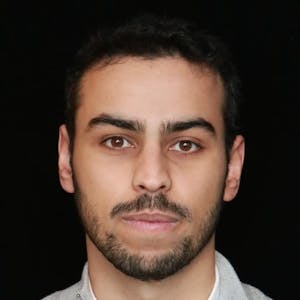My talk is about why performance work is not seen, so this is a little bit just of setting a little bit of expectations. It's not going to be a super deep technical talk, so we're going to be talking about governance, and we're going to be talking about how to drive performance governance.
My name is Vinicius, and, yes, I'm still originally from Brazil, and still living in Sweden. I work for Volvo Cars. One thing that we have in this room now, and I would like to think that we all care about performance. So, hopefully, we all care about performance. This is actually something that is very, very easy to understand why we, as engineers, care about performance. Our applications can be used in many different set of conditions that are not very predictable, and performance as a subject is also not very predictable. Our users can put our application to conditions that are just very hard for our applications to perform.
When it comes to performance that we are trying to gauge, we hopefully all know about lab tooling, and if we know about lab tooling, we most likely know about Lighthouse. When it comes to tooling and monitoring and metrics, we have the lab, and we also have the Rome tooling, so real user monitoring tooling. So it is important to have the two facets of the tooling ecosystem, so you have your lab data and you have those early regressions being caught, and you have your real user metrics where you're going to have actual representation of how your application runs in the real world.
But I don't know how many of you work within product teams, and we all know the backlog. The backlog is that entity, that presence that is always looming on our progress, and it is mostly where all good intentions go to die. The question for most of us that are trying to put some performance work out there to the world is how do you get your work prioritised out of the backlog? If you're like me, you have caught yourself, this is by the way, one of our Swedish offices, but those are all by me, and this is within the main lounge of our quite nice Gothenburg Swedish office. If you're like me, you have caught yourself, just like Jake, sitting down and wondering how can you make sure to get that nice work out there? How do you get the performance work and improve your metrics and shout to the world that you improve the user's performance? Just like everyone else out there, it also works into a product. Most often than not, things around you are on fire. And you're trying to wonder, how do I manage to get this work done? I want to work on performance. But things are always on fire, and you have to deal with that. And let's not forget, you have the backlog, that looming entity just beside you, reminding of its existence, and sometimes, somehow, the backlog is also on fire! And now you catch yourself trying to figure out how do you even do this kind of work? So how do we do it? How do you get our backlog that is on fire? Just as a little addendum, I try to get this kind of scene out of our favourite models to generate an image, and this is what I came up with. So it's pretty true to life, if you ask me. Even the fish eyes and stuff like that. But, you know, as a product team, we are always busy shipping features. At least that's the lie we tell ourselves, right? But we are always forced into thinking of what is the next thing we can ship and how quickly can we ship it? If you work for an open company, we have your stakeholders on top of you, or you're trying to get your company open, and you have your stakeholders on top of you. There is always this kind of time constraint in trying to focus on shipping features. And you're always fighting the clock, so it is very hard to get performance work prioritised because you're always chasing the next thing to ship.
The real question on trying to drive performance is how do you prove value? So, to prove value in this kind of setting is how do you manage to prove that the other overhead of working on performance actually will benefit your both your engineers and your users, right? And how do you set up this governance process? How do you justify the overhead? How do you manage the flow versus friction, both for your engineers and also to get work out in time? How do you get better deliverables out of the work you're getting? Because if you're working on performance, something that is not strictly feature-related, how can you make sure that whatever you ship becomes a better version of your product? Not just from the engineering perspective. And the answer is always data. And although not this guy, the answer is always data. So the data that we're trying to talk is, again, bringing back to the lab and run data.




























Comments